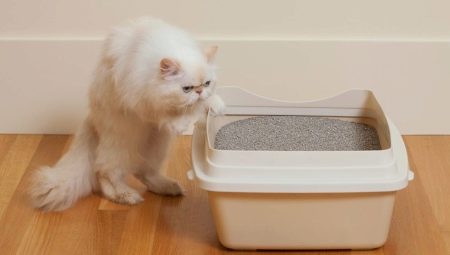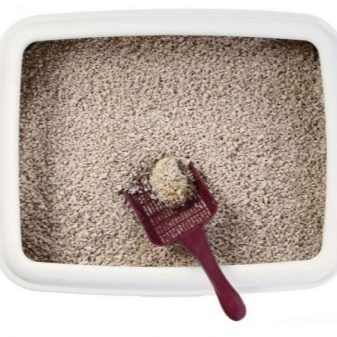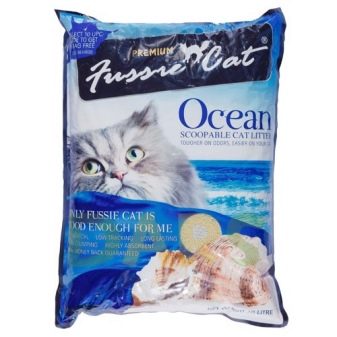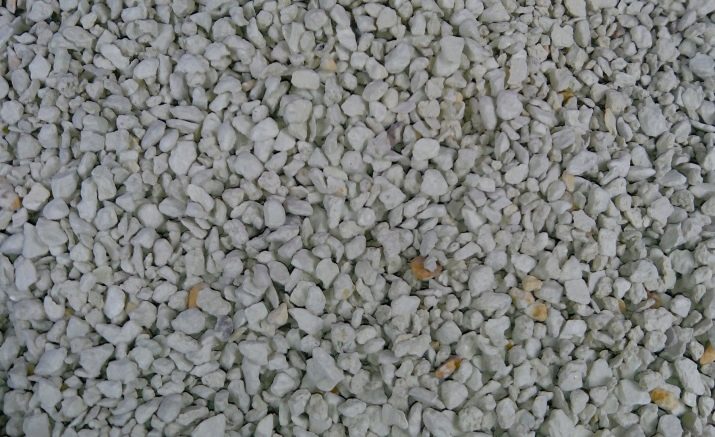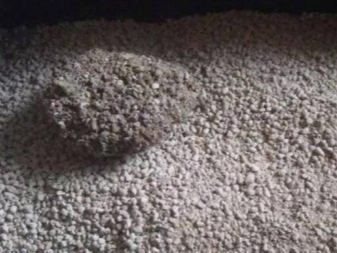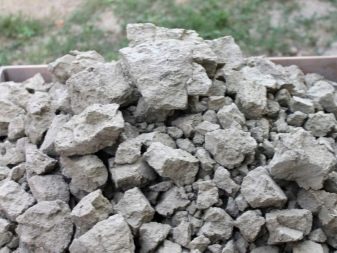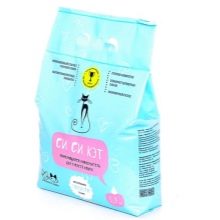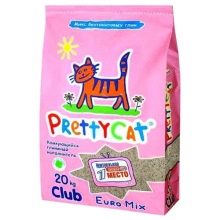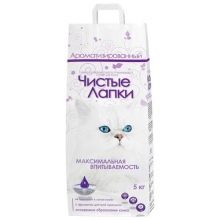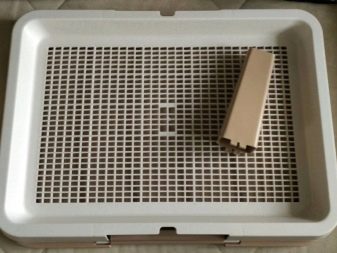When the kitten appeared in the house, the issue with the filler is solved on the first day. As soon as the new family member arrives at the apartment, the tray with the pellets should be ready. However, sometimes the crumb refuses to go to the pot, and the reason for this may be improper filler. To the child quickly accustomed to the tray, try using bentonite.
Composition and properties
Bentonite filler is clay, 70% consisting of layered finely dispersed mineral montmorillonite. The composition includes a natural additive E 558 from the group of emulsifiers. When they hit the granules of liquid, they lump together and turn into a gel-like gruel with thixotropic properties.
The resulting lump is easily removed with a spatula, and the remaining granules, untouched by moisture, remain in the container, which makes such a filler very economical.
By structure, the product is grains similar to gravel. Shops offer both odorless and aromatic fillers, such as lavender or forest strawberry.
Advantages and disadvantages
Advantages of bentonite filler:
- bentonite is a natural element that effectively absorbs water and odor;
- the cost of the filler is quite democratic for any social class;
- the granules coagulated from moisture into a lump are very easy to remove;
- solid waste buried by a cat does not emit unpleasant odors for a long time;
- the natural origin of the clay-based filler does not adversely affect the pet's skin and coat.
Before you buy bentonite granules at the pet store, you should be familiar with some of the shortcomings of the product.
- Bentonite cannot be disposed of through the toilet. As already mentioned, it hardens on contact with water and turns into cement, which can clog sewer pipes. Flushing into the toilet is allowed only lumps formed from a single visit to the animal toilet.
- Many curious kittens do not mind to try crumbly pebbles on the taste, and this can be dangerous for their weak intestines.
- The inconvenience this filler causes, if the tray is in the bathroom or toilet. The substance stuck to the ceramic tile, which the kitten can smash on the paws, is difficult to remove.
- Despite the ability to absorb the smell well, when you repeatedly visit the tray with a kitten, the unpleasant odor will still spread throughout the apartment. Therefore, lumps made up of liquid waste should be removed after each feline trip to the toilet, and not wait until the entire contents of the container is turned into cement.
- If you do not change the lumpy filler for a long time and do not clean up after the kitten, then it will be quite problematic to clean the pot.
How to choose?
Before you buy a cat bentonite filler, Use a few tips on choosing products.
- Choose bentonite with a smaller fraction. So the work of the pot will be more efficient. At the same time, very small grains stick to the kitten's paws more easily and are spread throughout the apartment.
- Shops offer a product without a smell or with a scent - for example, with sea fragrances, powdery, lavender, peanut products. Aromatic filler better absorbs the smell, however, not all cats like it.
- Examine the composition of the product. Check if it contains allergens.
- Do not be afraid to take the options, which include wood inclusions.Smell they absorb better, but need more frequent cleaning.
- Most of all cat owners appreciate bentonite filler from manufacturers Biokat`s, Fussie Cat, Pi-Pi-Bent Classic, "Sea Cat", "Clean legs", PrettyCat.
What if the kitten eats bentonite?
Quite often a situation arises when a kitten begins to eat bentonite granules. Do not allow these actions, grains can cause intestinal blockage. Seeing that the kitten has become sluggish, sleepy, his appetite has disappeared and other signs of poisoning have appeared, immediately carry the pet to the veterinarian. and be sure to take with you a handful of filler and packaging from it to show the specialist what caused the condition of the kitten.
To avoid this situation in the future, try to teach the kitten to go to the toilet on the grate. That is, pour bentonite on the bottom, and put a grid on top. Thus, the dangerous stones will be hidden from the cat's child. In addition, this method will save the apartment from the spread of grains, because now the kitten will not touch the filler with its paws.
The only negative is that solid waste will not be buried, but the responsible owner always cleans the tray of excrement in time.
The reason for this behavior of a kitten can be his and improper feeding. Pet diet should be balanced and supplemented with vitamins. It is best to consult a veterinarian. Let the expert recommend how to properly feed a particular animal, depending on its age, build, breed, health status. If the kitten does not experience a shortage of any substances in its body, then most likely, bentonite granules will not interest him.
For a review of the Mafin bentonite cat litter, see below.
